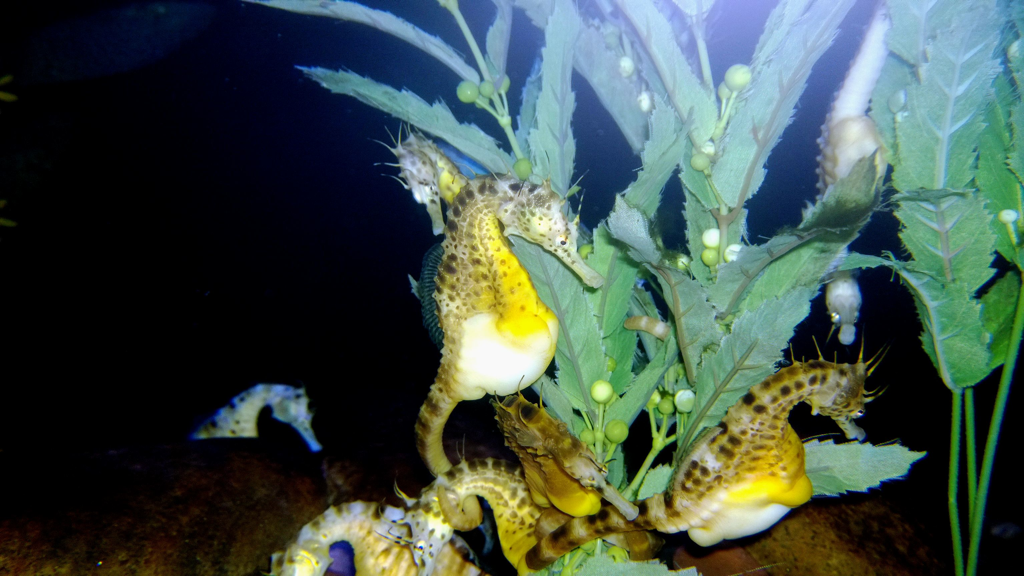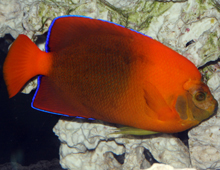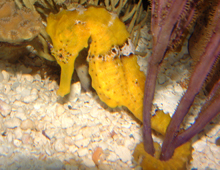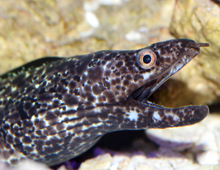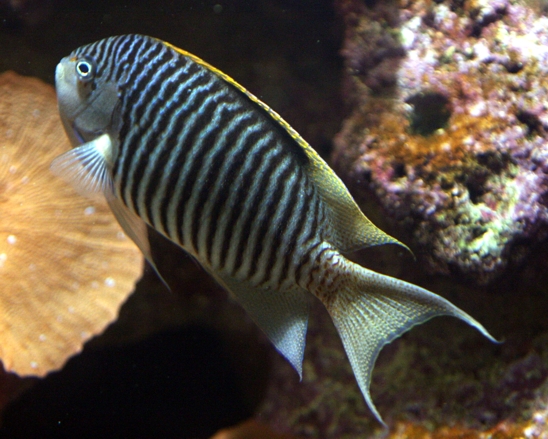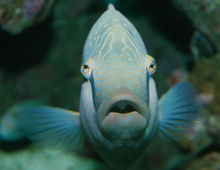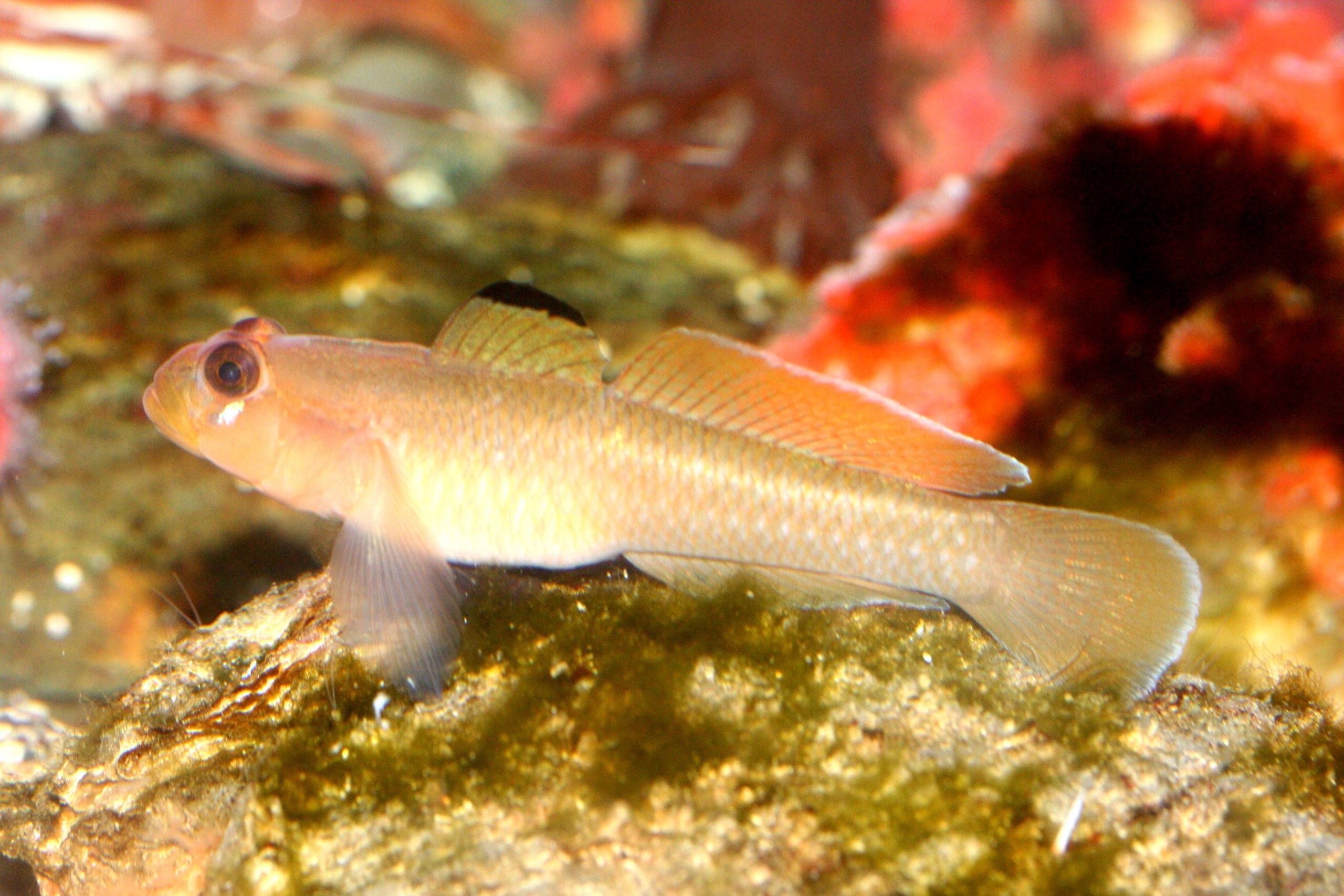
The body of the Blackeye goby (Rhinogobiops nicholsii) is usually a light beige to olive in color with darker spots and mottling. The body coloration and its spots can change if needed. A thick black edge can be seen on the fore-dorsal fin. The raised, big black eyes are responsible for its common name.

